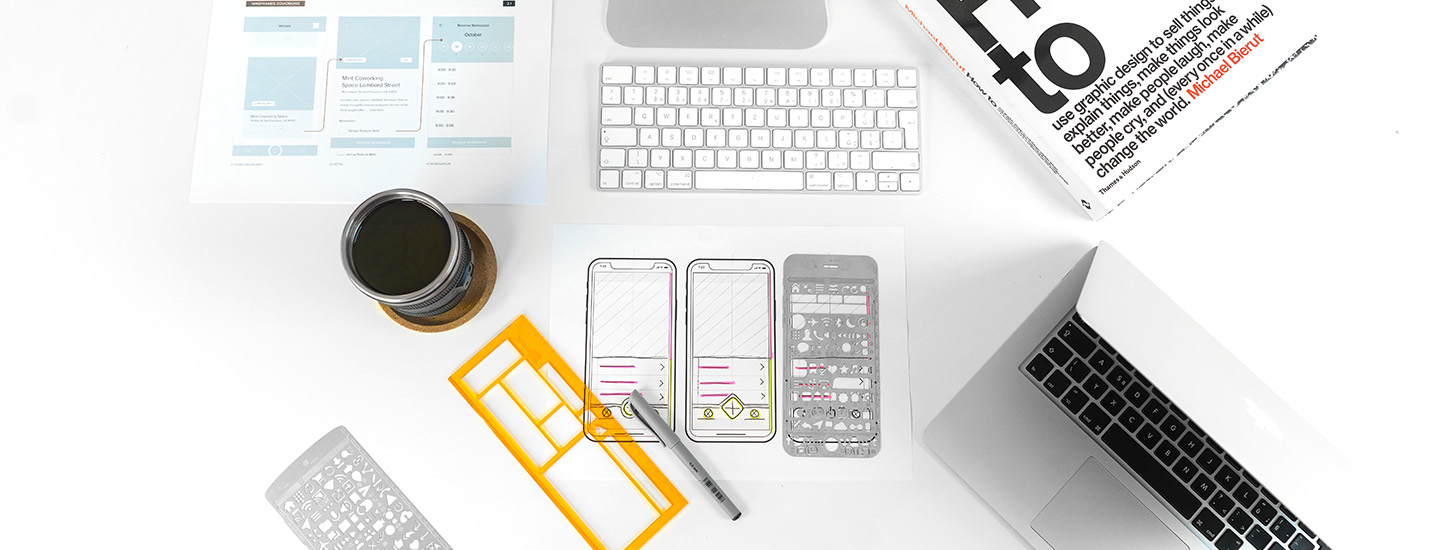Wireframing – saving time and money

Wireframing – saving time and money
Websites can be built in so many different ways, but there only a few of them that will successfully attract new business and retain existing customers by providing a good customer experience. A good website design and interface structure is possibly the most important consideration for any modern business.
The key to success lies in the initial design of the website and wireframing is one critical process that is so often neglected. By defining the information hierarchy and logical navigation of a website, wireframing makes it easier to plan the arrangement of content that will ultimately improve the user experience.
Designers can now concentrate on the basic foundation of the website rather than the aesthetics because wireframes focus purely on the structural elements, nothing to do with the graphical interface such as colour and fonts. It is much easier and faster to make structural changes to a wireframe than to a fully designed page concept.
Wireframes enable designers to work on the underlying elements of a website without the distraction of graphics, something that will eliminate the need for expensive changes later. Here are some good reasons why one should consider wireframing when starting a web design project.
Structure
Wireframes help designers determine which elements need to be included in each page and the functional requirements for those elements. They also allow the client and designer to collaborate to create a solid page structure, before the design is fully implemented.
Instead of creating a different wireframe for every possibility, one needs to settle on one concept. Wireframing is a brilliant tool to trial different ideas; but one needs to eventually settle on specific features and structures.
Content
Wireframes allow designers to focus on site navigation and content. It helps them decide what content needs to be provided to guide the user along the correct path to find the required information. One needs to define what you want your visitors to do when they visit your website. They also help clients and designers see which page elements are more important and one can easily see how the content is displayed on each page.
Purpose
Wireframes help designers avoid placing too much emphasis on design. Working in greyscale helps them focus on the purpose of the page, the functional processes, the structure and layout – not the design.
UX
Wireframes highlight the basic structure and functionality of the website, the elements that will ultimately impact UX. Focussing on the design elements rather than basic structure could be disastrous, one needs to use wireframes to address critical elements such as usability, functionality and UX.
By eliminating graphics, wireframes allow designers to focus on the functionality of each element on a page, placing a strong focus on developing the best possible UX.
Features
Wireframing helps designers decide which features are essential. It allows clients and designers to trial various apps and tools that could improve the UX and consequently increase the conversion rate. Seeing features without a graphical interface could help one identify the elements that really matter. Also, with wireframing, one can easily remove a feature if it doesn’t fit in with the goals of your website.
Time saving
Wireframing will save a lot of time throughout the project lifecycle. It also simplifies the design phase because designers can now focus on the design and no longer worry about the flow and purpose of each page. They will now receive the approved wireframes from which to design.
Graphics
Starting with too much detail could lead to confusion; one can always add extra detail at a later stage. Designers should keep wireframes clean to keep everything simple as possible, they can use grey rectangles for images and Lorem Ipsum for text.
Conversion
A wireframe project enables web designers to focus exclusively on the UX, from conversion to customer loyalty. However, conversion rates don’t necessarily translate to a good UX or future sales. It is equally important to retain loyal customers as it is to convert new ones.
Many companies spend a lot of time and money focusing on improving conversion rates, but they should also think about how they can improve the follow-through on those conversions. For example, a good website will always make sure a customer is well-informed even after taking their money.
The final word
Wireframing simplifies the process of creating user interfaces but it doesn’t mean that creating good user interfaces is easy because UX design is a science. Wireframes are only part of the design process so it’s worth engaging with an experienced UX professional, it will save you lots of time and money.
